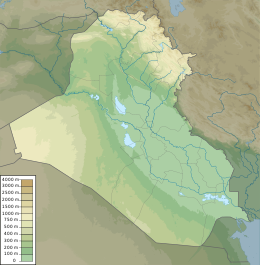 Area corresponding to the Jemdet Nasr culture in light brown. The area corresponding to the Uruk culture is in yellow. | |
| Geographical range | Mesopotamia |
|---|---|
| Period | Bronze Age |
| Dates | c. 3100 BC – c. 2900 BC |
| Type site | Tell Jemdet Nasr |
| Major sites | Tell Abu Salabikh, Tell Fara, Tell Khafajah, Nippur, Tell Uqair, Tell el-Muqayyar, and Eanna district, Bit Resh (Kullaba), and Irigal |
| Preceded by | Uruk Period |
| Followed by | Early Dynastic Period |
The Jemdet Nasr Period (also Jemdat Nasr period) is an archaeological culture in southern Mesopotamia (modern-day Iraq). It is generally dated from 3100 to 2900 BC. It is named after the type site Tell Jemdet Nasr, where the assemblage typical for this period was first recognized. Its geographical distribution is limited to south-central Iraq. The culture of the proto-historical Jemdet Nasr period is a local development out of the preceding Uruk period and continues into the Early Dynastic I period.
Map of Iraq showing important sites that were occupied during the Jemdet Nasr period (clickable map)
